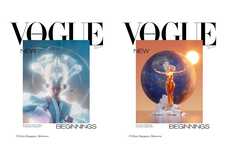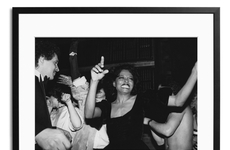
The Face Magazine Archive Highlights Gritty Publishing Swag
Jordan Sowunmi — August 5, 2011 — Fashion
References: thefacearchive.tumblr & lifelounge.au
When the Face Magazine was established in 1980, it immediately changed the face of publishing directed at young consumers -- now, 31 years later, the Face Magazine archive is allowing a new generation of consumers to appreciate and chart the impact it made.
Launched by English journalist and publisher Nick Logan, the Face Magazine was one of the first youth-orientated lifestyle magazines that sought to cover art, music, movies, fashion, and club culture with the kind of journalistic zeal typically reserved for much more "serious" matters.
The Face Magazine archive allows viewers to dive into the history of the magazine, which, when launched, broke ground by inventing the template by which numerous subculture magazines (Dazed & Confused, i-D Mag, Vice) have run with in the last two decades.
My favorite part about the Face Magazine archive is looking through the old covers and seeing the kind of edgy photography of a previous generation's hottest young celebrities. One cover features a 15-year-old Kate Moss, another features Naomi Campbell in her youthful prime. My favorite cover from the Face Magazine archive, however, features the (mostly) reclusive child star Macauly Culkin, mid-spit while looking up at the camera with a facial expression that is equal parts disdainful, dismissive, and alluring.
The image captures the Face Magazine in the way it is best remembered by former fans and the countless journalists, writers, and photographers it has influenced -- jarring, aggressive, and memorable.
Launched by English journalist and publisher Nick Logan, the Face Magazine was one of the first youth-orientated lifestyle magazines that sought to cover art, music, movies, fashion, and club culture with the kind of journalistic zeal typically reserved for much more "serious" matters.
The Face Magazine archive allows viewers to dive into the history of the magazine, which, when launched, broke ground by inventing the template by which numerous subculture magazines (Dazed & Confused, i-D Mag, Vice) have run with in the last two decades.
My favorite part about the Face Magazine archive is looking through the old covers and seeing the kind of edgy photography of a previous generation's hottest young celebrities. One cover features a 15-year-old Kate Moss, another features Naomi Campbell in her youthful prime. My favorite cover from the Face Magazine archive, however, features the (mostly) reclusive child star Macauly Culkin, mid-spit while looking up at the camera with a facial expression that is equal parts disdainful, dismissive, and alluring.
The image captures the Face Magazine in the way it is best remembered by former fans and the countless journalists, writers, and photographers it has influenced -- jarring, aggressive, and memorable.
Trend Themes
1. Retro Magazine Revivals - With the success of the Face Magazine archive, there is an opportunity for other magazines with extensive archives to revitalize old content for new audiences.
2. Youth-oriented Journalism - The Face Magazine paved the way for more journalistic approaches to youth culture, and new publications can continue to innovate in this space.
3. Subculture-centered Content - The Face Magazine demonstrated the demand for content that focuses on specific subcultures, and there is an opportunity to create new publications that cater to niche interests.
Industry Implications
1. Publishing - Publishing companies can explore ways to utilize their archives of content to appeal to younger audiences and revitalize old brands.
2. Media - The Face Magazine's success in covering youth culture and subcultures demonstrates the potential for media companies to produce more specialized and in-depth content.
3. Fashion - The Face Magazine was pivotal in covering fashion in a new way, and there is an opportunity for new publications and brands to innovate in this space.
3
Score
Popularity
Activity
Freshness























